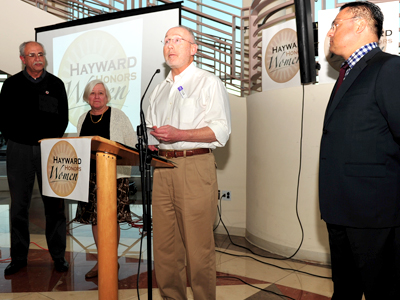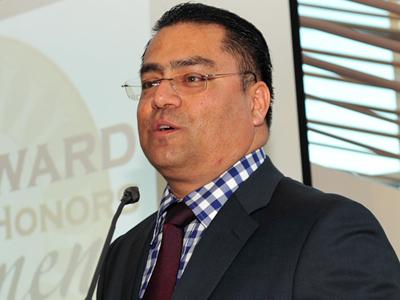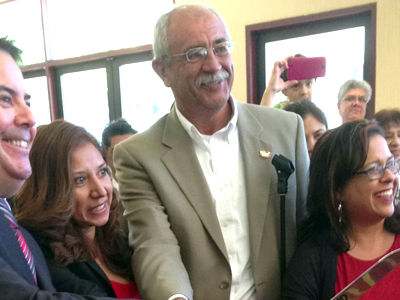
Hispanics represent the largest minority group in the United States. In California, Hispanics for the first time will become the largest ethnic group by the end of this year, according to a report contained in Governor Jerry Brown’s 2013-14 budget proposals.
These demographic changes reflect changes in all political positions as Hispanics gain more electoral power. There were 5.9 million eligible Hispanic voters in California in 2012, being the largest block.
Because Hispanic population growth is largely driven by the younger generations, education is a big issue for public officials. Studies have shown that only 16 percent of California Hispanics hold a college degree, which is much lower than the 40 percent figure for all Californians. The saddest part is that the 16 percent figure is declining.
In grade schools, Hispanics represent more than half of all students in California, though the drop-out rate is high.
According to census studies and reports (2006-2010 ACS) in the Bay Area, there are 1.7 million Hispanic residents, which represent 23.5 percent of the entire regional population. With 7 counties, 101 cities, and approximately 7 million people, there are a total of only 36 elected officers who are Hispanic. In Alameda County, there are only 6 Hispanic representatives.
The number of Hispanics holding office is very small in comparison to the huge population seeking representation. As Hayward Councilman Mark Salinas stated, “they could all fit in my car” (literally).
 Advocacy groups are urging Hispanic voters to attend public hearings, in an attempt to wake up ‘the sleeping giant’.
Advocacy groups are urging Hispanic voters to attend public hearings, in an attempt to wake up ‘the sleeping giant’. In the East Bay, the city of Hayward prepares for a new mayor, as mayor Michael Sweeney decides it’s time to retire; two Hispanic city council members have announced their campaign for the position of mayor. They are Councilman Francisco Zermeño and Councilman Mark Salinas. Also running for the position is Council-member Barbara Halliday in an open race.
Visión Hispana met with both Hispanic candidates on two separate occasions, addressing different issues. Though their answers may sound similar, as they pencil in their own agendas, it is up to the voter to decide who is a better candidate.
Councilman Francisco Zermeño, age 61, was born in the state of Jalisco, Mexico where he lived up to the age of 12. His family migrated to Salinas, California where he went to school at UC Santa Barbara and then to arrive in Hayward where he put his teaching credentials to work. In addition to being a full-time tenured educator at Chabot College for the last 35 years, Zermeño has also been a business owner for many years in Hayward. Six years ago he was elected to the Hayward city council and was re-elected last year.
On his run for mayor, he explains, “It has been a very positive experience, I am a people person, I like to help, and I have the time, the energy and the ideas. I think that’s important, as we need someone who takes us further than where we are and I think it can be done. I want to be the person to do it.”
In addition to his role as an educator, the business-minded candidate has been a leader in Hayward’s business community for several years. He has helped people start or enhance their businesses, a role that he expanded by forming the Latino Business Roundtable in conjunction with the Hayward Chamber of Commerce. The roundtable group filled a critical need for Hayward businesses to promote and support each other in their growth.
Zermeño’s mayoral campaign focuses on business, the economy, education and public safety because he feels those are very important issues in his heart and in the hearts of those who endorse and support his campaign.
 “The city of Hayward is not where I was born, but is certainly a place I have adopted, since 1978,” he says. “I am going to die happy in Hayward, I live happy in Hayward, as resident, and it’s a matter of collaborating, partnering, associating and working together. I’m an educator so I’m going to work with education foundations, and I’m a businessman so I’ll work with the chamber of commerce. I’m a professor, so I’ll work with educators. I also like to work with youngsters, because we don’t do enough for the youth - I’m advisor to the Hayward Youth Commission addressing needs to be done.”
“The city of Hayward is not where I was born, but is certainly a place I have adopted, since 1978,” he says. “I am going to die happy in Hayward, I live happy in Hayward, as resident, and it’s a matter of collaborating, partnering, associating and working together. I’m an educator so I’m going to work with education foundations, and I’m a businessman so I’ll work with the chamber of commerce. I’m a professor, so I’ll work with educators. I also like to work with youngsters, because we don’t do enough for the youth - I’m advisor to the Hayward Youth Commission addressing needs to be done.”In closing, Council-member Zermeño says he believes that in “diversity there’s unity”, and that he supports the Dream Act and immigration reform, saying, “It is something that should have been done a long time ago.”
Council-member Mark Salinas, 43, says that he ran for city council for many reasons, but the primary reason was that he did not see a voice on city council that would reflect the young people, the emerging young students and the young families of Hayward.
“I feel young Hayward families are faced with very unique experiences today, and I didn’t see the council addressing issues affecting working families,” says Salinas.
“The second thing I noticed - I didn’t see discussions relative to our city being a city of schools. Nobody talked about Hayward within the context of an education city, nobody.”
Salinas says he has worked intensely in making Hayward plan the future of the city as an education city.
“The solutions to many of our city’s problems are sitting right there in front of us, in our city’s classrooms. Hayward voters willing, it is my intention to make it an education bound city. I have clearly demonstrated I can work across government agencies, with an array of communities, coalitions and churches to deliver things for the city.”
Council-member Salinas went back 50 years into city records and found no plans into the future for education.
“What I’ve done, I’ve started a conversation about our schools, from pre-school to grad school, ranging from back, front and center of every major policy discussion.”
Business also plays a big role in his agenda, as he realizes that whenever people come to a city, they ask if there are opportunities available to them. His idea of growing the economy is by making sure whenever new projects arise, that they hire Hayward people at every scale. So that when young families move to Hayward they may enjoy the same type of opportunities his own parents had when they came to Hayward back in the 1950’s, thus becoming better on each generation.
Salinas points to two programs in which he is involved: Let’s do Lunch Hayward and Breakfast Too.
“This past summer we fed 156,000 students under the age of 18. Using several resources, we were able to come together. No child goes hungry in the city of Hayward.”
Salinas also volunteers as executive director of The Kids Breakfast Club, which works with local schools to provide breakfast and nutritional and educational activities for kids and their parents.
In closing, candidate Salinas says that he models his style of leadership after the late Cesar Chavez. “I serve… when people elected me I promised them I wasn’t going to just a Tuesday night councilman. They knew when they voted for me they would find me just about anywhere in the city.”
In the eight months remaining until the mayoral election in 2014, Hayward residents will be looking to these candidates for more specifics, more ideas, and more inspiration. It will be an interesting race.

